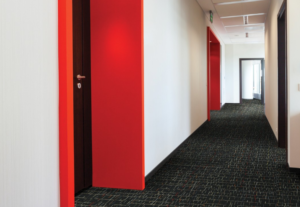When it comes to selecting the ideal tile for your home, the choice between porcelain and ceramic tiles is a fundamental decision that can greatly influence the aesthetics, durability, and cost-effectiveness of your project. Both porcelain and ceramic tiles have their own unique characteristics and advantages, making them suitable for various applications in residential and commercial settings. In this comprehensive  article, we will delve into the critical differences between porcelain and ceramic tiles, from the perspective of an expert, to help you make an informed choice for your tiling needs.
article, we will delve into the critical differences between porcelain and ceramic tiles, from the perspective of an expert, to help you make an informed choice for your tiling needs.
Composition and Manufacturing Process
Porcelain and ceramic tiles may seem similar at first glance, but they differ significantly in their composition and manufacturing processes. Porcelain tiles are made from a more refined and dense clay, which is fired at higher temperatures than ceramic tiles. This results in a more compact and robust product, characterized by a water absorption rate of less than 0.5%. In contrast, ceramic tiles are produced from a mixture of various clays, with a lower firing temperature, leading to a water absorption rate of 0.5% to 3%.
Porcelain tiles, due to their higher density and finer clay, are typically harder and more durable than ceramic tiles. Their manufacturing process involves the use of a specialized press, which subjects the clay to higher pressures, creating a dense and durable tile. This makes porcelain tiles highly resistant to chipping, cracking, and wear and tear, making them an excellent choice for high-traffic areas.
Ceramic tiles, on the other hand, are less dense and more porous than porcelain tiles. The lower firing temperatures result in a tile that is more susceptible to damage and wear. However, this doesn’t mean that ceramic tiles are without merit; they have their own advantages, especially in applications where extreme durability is not the primary concern.
Aesthetic Appeal
The aesthetic appeal of both porcelain and ceramic tiles plays a significant role in their selection. Porcelain tiles often emulate the look of natural stone, such as marble or travertine, with remarkable accuracy. The higher firing temperatures allow for more advanced printing techniques, creating tiles with intricate patterns, veins, and textures. These tiles come in various finishes, including polished, matte, and textured, making them suitable for a wide range of design styles.
Ceramic tile, while offering a wide array of colors, patterns, and designs, may not achieve the same level of realism when mimicking natural materials. However, this doesn’t diminish their decorative potential. Ceramic tile is versatile and allow for creative freedom in design. They are available in glossy, satin, or matte finishes, and their wide color palette makes them adaptable for various design schemes.
It’s essential to consider the intended aesthetic of your space when choosing between porcelain and ceramic tiles. Porcelain tiles are often favored for high-end and luxurious interiors, while ceramic tiles are suitable for projects where cost-effective versatility is a priority.
Durability and Strength
Porcelain tiles are renowned for their exceptional durability and strength. They are highly resistant to wear and can withstand heavy foot traffic, making them an excellent choice for busy areas such as kitchens, hallways, and commercial spaces. The compact structure of porcelain tiles also provides resistance to moisture, making them suitable for both indoor and outdoor use.
Ceramic tile, while not as robust as porcelain, still offer decent durability. They are suitable for indoor applications and can handle moderate foot traffic. However, they may not be the best choice for outdoor installations due to their increased vulnerability to moisture absorption.
In terms of strength, porcelain tiles have an edge over ceramic tile. Their dense composition makes them less prone to chipping or cracking when subjected to heavy loads or impact. This makes porcelain an ideal option for areas where accidents or dropped objects are common.
Maintenance and Cleaning
The maintenance and cleaning requirements of porcelain and ceramic tiles differ due to their varying levels of water absorption. Porcelain tiles have a lower water absorption rate, which means they are less prone to staining and moisture damage. This characteristic makes them easier to clean and maintain.
Ceramic tiles, with their higher water absorption rate, are more susceptible to staining and moisture-related issues. They require more diligent maintenance to preserve their appearance. Regular cleaning with appropriate cleaning products is essential to keep ceramic tiles in good condition.
It’s important to consider the specific requirements of your space and the level of maintenance you are willing to commit to when choosing between porcelain and ceramic tiles. If you want a low-maintenance option, porcelain tiles are a preferable choice.
Cost Considerations
One significant factor that influences the choice between porcelain and ceramic tiles is cost. Ceramic tiles are generally more affordable than porcelain tiles. The manufacturing process of ceramic tiles is less resource-intensive, which translates into a lower price point. If you have a tight budget, ceramic tiles may be the more attractive option.
Porcelain tiles, while more expensive, offer long-term cost savings due to their durability and lower maintenance requirements. They are a wise investment for areas that experience high traffic and wear, as their longevity can offset the initial higher cost. The decision should be based on your budget and the intended use of the tiles.
Installation and Suitability
The installation process and suitability of porcelain and ceramic tiles can also vary depending on the project’s requirements. Porcelain tiles are heavier and denser, which may necessitate a more robust substrate and adhesive during installation. Their hardness also makes cutting and shaping porcelain tiles a more labor-intensive task.
Ceramic tiles are generally easier to handle during installation, thanks to their lighter weight. They can be applied to a wider range of surfaces, including drywall. Ceramic tiles are more forgiving when it comes to cutting and shaping, making them a practical choice for DIY enthusiasts.
It’s essential to consider the demands of your project when selecting between porcelain and ceramic tiles. If you’re planning a DIY project or need a cost-effective solution, ceramic tiles may be the way to go. However, for high-traffic areas or outdoor installations, porcelain tiles are often the superior choice.
Environmental Considerations
Environmental sustainability is a growing concern in the construction and design industry. Both porcelain and ceramic tiles have their merits and drawbacks when it comes to eco-friendliness.
Porcelain tiles are typically considered more environmentally friendly due to their higher durability. The longer lifespan of porcelain tiles means that they need to be replaced less frequently, reducing the demand for raw materials and the energy expended in manufacturing and transportation. However, it’s worth noting that the firing process of porcelain tiles typically requires higher temperatures, which can be energy-intensive.
Ceramic tiles have a lower initial environmental impact due to their lower firing temperatures. However, their shorter lifespan and increased need for replacement can offset this advantage over time. Ceramic tiles may be a more eco-friendly choice for projects where durability is not a top priority.
When it comes to environmental concerns, it’s advisable to consider the entire life cycle of the product, from production to disposal. Assess your priorities in terms of sustainability and make your choice accordingly.
Applications
The suitability of porcelain and ceramic tiles for specific applications is a critical consideration. Each type of tile has its strengths and weaknesses in various contexts.
Porcelain tiles are exceptionally well-suited for:
- High-traffic areas: Porcelain’s durability and resistance to wear make it ideal for busy spaces like commercial lobbies, hallways, and kitchens.
- Outdoor use: Due to their resistance to moisture, porcelain tiles are a suitable choice for patios, pool decks, and outdoor walkways.
- Wet areas: Porcelain’s low water absorption rate makes it an excellent choice for bathrooms and shower walls and floors.
- Heavy furniture or appliances: The hardness of porcelain tiles means they can withstand the weight and pressure exerted by heavy objects.
Ceramic tiles are often preferred for:
- Interior walls and decorative features: Ceramic tiles are lighter and easier to install on vertical surfaces, making them a popular choice for accent walls, backsplashes, and decorative tiling.
- Lower-traffic areas: In spaces where heavy foot traffic is not a concern, such as bedrooms, living rooms, and dining rooms, ceramic tiles are a cost-effective option.
- DIY projects: The ease of handling and cutting ceramic tiles makes them accessible to DIY enthusiasts for smaller home improvement projects.
It’s important to evaluate your project’s requirements and the specific demands of the space when deciding between porcelain and ceramic tiles.
Conclusion
In the world of tiling, the choice between porcelain and ceramic tiles is not a matter of one being better than the other; it’s a matter of understanding their distinctions and selecting the one that best aligns with your project’s needs. Porcelain tiles are prized for their exceptional durability, low water absorption, and suitability for high-traffic areas, while ceramic tiles are known for their affordability, versatility, and ease of installation.
Whether you’re planning to create a luxurious kitchen, a tranquil bathroom, or an inviting outdoor patio, your choice between porcelain and ceramic tiles will greatly impact the aesthetics, longevity, and maintenance of your space. By considering the factors discussed in this article, you can make an informed decision that ensures your tiling project stands the test of time and meets your specific design and functional requirements.
To find out which tile is best for your home or office, please contact us here.



